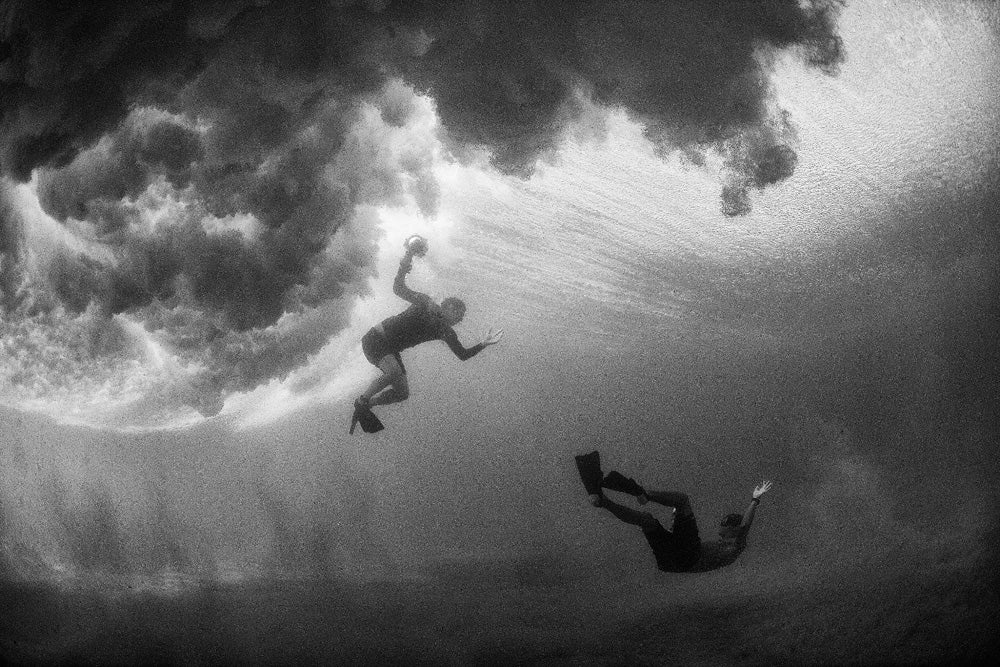Photographer Michael Clark (www.michaelclarkphoto.com) is an internationally published outdoor photographer specializing in adventure sports, travel, and landscape photography. His editorial and corporate clients include National Geographic, Sports Illustrated, Outside, Men's Journal, Outdoor Photographer, Digital Photo Pro, Climbing, Nike, Nikon, Adobe, Patagonia, Pfizer and DuPont to name just a few.
Michael: "Over the last four years or so that I have been shooting surfing, I have had mixed feelings about getting in the water to shoot surfing. Sure, I have swam out and shot from the water in California, Tahiti and at a few spots in Hawaii, but none of those spots were anything like Pipeline. The Bonzai Pipeline, known as Pipe, is one of the world’s most treacherous waves, especially for photographers. Just to put it in perspective, over the last decade more photographers have died at Pipeline than surfers.
The reason I have had mixed feelings about shooting from the water are numerous. First, you miss a lot of shots while swimming because you are constantly moving around and ducking under waves to stay out of trouble. Second, the waves tend to look smaller when you are out in the water than they do when shooting from shore. And third, there is the fact that I am not a surfer and shooting from the water is quite dangerous. I am an excellent swimmer, and I feel very comfortable in the water, but swimming safely at Pipe takes more than just confidence.
Earlier this year I swam out at Pipeline for the first time with my good friend and legendary surf photographer Brian Bielmann. The waves weren’t that big, maybe in the three to five foot range on the Hawaiian scale, but it was still tough to get out there. Once I made it out into the waves, it was relatively easy to duck under waves and get into position. Avoiding all of the surfers and body boarders was an altogether different matter, but I seemed to manage that OK. The first thing you notice when you are shooting at Pipe is that your fins are scraping against the reef just underneath you. The water was about six feet deep and hence, any mistake could result in getting slammed onto the reef. On the day we went out that was unlikely, but on a bigger day I could see it happening.
The other big danger at Pipeline (and anywhere you are shooting surfers from the water) is getting hit by a surfboard. This is the reason most surf photographers wear a helmet in the water. Nonetheless, with all of these inherent dangers, it was an exhilarating experience, and I am keen to get back out there and get some stellar water shots. You certainly won’t find me swimming out at Pipeline on the biggest days—at least not for a few years, but I would like to get in the mix on some medium-sized days and get more experience.
As a rock climber, I have to say it seems much scarier to swim out at Pipeline than to hang 3,000-feet off the deck on El Cap. I know that no surfing photographer would agree with me on that, but it is just a matter of experience and comfort. Stay tuned for images from the water."
Stay connected to Micheal: Website | Blog | Workshops | Facebook | Twitter


